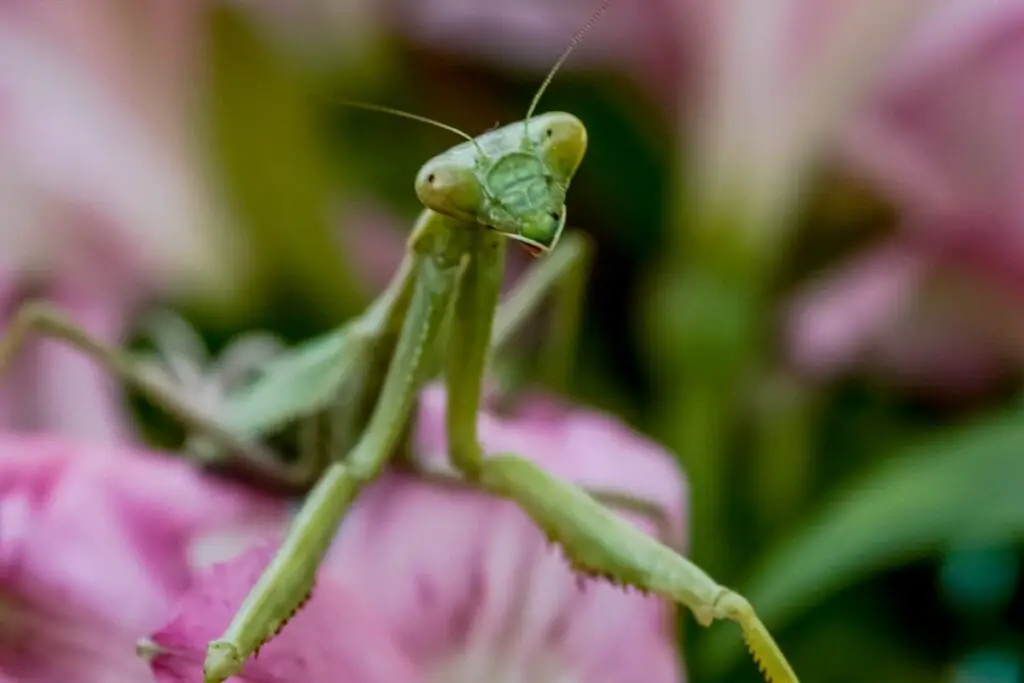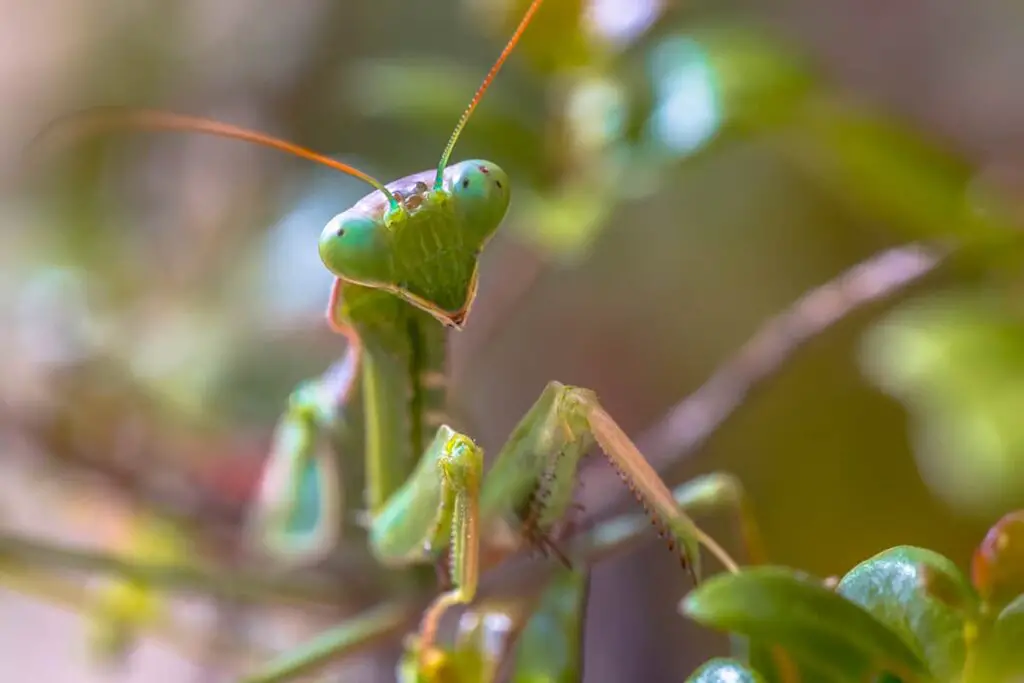Breeding praying mantises can be a fascinating endeavor, especially if you have a keen interest in entomology or wish to observe the remarkable lifecycle of these insects firsthand. It’s essential that you understand the optimal conditions required for mantis breeding to ensure the best chances of success. From maintaining the proper environment to ensuring that your mantises are well-fed and healthy, there are several factors to consider.
To get started with mantis breeding, you need to ensure that both male and female mantises are mature and have been kept in healthy conditions. Typically, this means they should be adults for at least two weeks and have had a diet substantial enough to support reproductive health. The environment you create for them to interact should mimic their natural habitat as closely as possible, with ample space, the right temperature, and proper ventilation.
Once you’ve taken care of these conditions, pairing your mantises is the next step. It’s crucial to do this with care, as mantises can be cannibalistic if not well-fed or if they are disturbed. Creating a stress-free environment for them to mate is key to a successful breeding. After mating, the female will require a safe space to lay her ootheca—an egg mass from which the nymphs will hatch. Keeping the ootheca in the right conditions will eventually lead to a new generation of praying mantises for you to observe and care for.
Understanding Mantis Species
When you’re embarking on breeding mantises, it’s crucial to tailor your approach to the specific needs and behaviors of the species you’re working with.
Species-Specific Requirements
Different mantis species demand varying environmental and dietary conditions to thrive and reproduce effectively. For instance, the Orchid Mantis requires a well-ventilated enclosure with a fabric cover to allow it to hang upside down, which is critical for molting and displaying mating behaviors. Ensuring these conditions are met can increase the chances of successful mating and egg-laying.
Behavioral Characteristics
Behavior plays a pivotal role in mantis breeding; understanding it can be the difference between success and failure. Many mantis species exhibit cannibalistic tendencies during and after mating, which means you must manage them carefully to avoid the male becoming a post-mating meal. If you’re dealing with a cannibalistic species, consider separating the mantises immediately after copulation to ensure the survival of both individuals.
Creating the Breeding Environment
Creating the right breeding environment for your mantis requires careful attention to both temperature and humidity, as well as a properly set up habitat. These elements are crucial for encouraging mating and ensuring the health of your mantises.
Temperature and Humidity Control
- Temperature: Aim to maintain breeding temperatures in the range of 24°C to 28°C (75°F to 82°F) to facilitate optimal mating conditions. This temperature range stimulates the natural environment that mantises are adapted to for breeding.
- Humidity: Ensure humidity levels remain between 50% and 70%. This helps mimic the natural humidity conditions that mantises thrive in for successful mating. Consider regular misting every second day to maintain the necessary moisture levels.
Proper breeding humidty and temperatures are essential.
Habitat Setup
- Ventilation: Your mantis enclosure should have two opposite ventilation areas to prevent stagnant air and moisture.
- Tip: One ventilation area should be located higher and the other lower to facilitate air flow.
- Enclosure Size: Make sure the mating enclosure is spacious enough for the mantises to move freely but secure enough to prevent escapes.
Appropriate habitat ventilation is a key to mantis health.
Breeding Cycle Management
Before you set out on your mantis breeding journey, it is crucial to understand the processes of the mating rituals and the proper care for egg laying and incubation.
Mating Rituals
When initiating mating rituals, it is important for you to ensure that both the male and female praying mantises are mature and healthy. Typically, maturity is reached about two to three weeks after the final molt. It’s advisable to start with feeding your female mantis adequately, as a well-fed female is less likely to exhibit aggressive behavior towards the male during mating. Introduce the male to the enclosure in the evening, as mantises are more receptive to mating at dusk or during the night.
Egg Laying and Incubation
After successful mating, you must provide an optimal environment for egg laying and incubation. Female mantises will produce an ootheca, an egg case, within a few weeks post-mating. The environment should have a humidity level of around 70%, which you can maintain using a humidifier or regular misting. Ensure the temperature remains stable, preferably between 75°F and 80°F (24°C – 27°C). The incubation period can vary, typically ranging from 3 to 6 weeks depending on the species and environmental conditions. Keep the ootheca secure on a twig or plant stem in the enclosure for proper development.
Frequently Asked Questions
In this section, you’ll find specific answers to common concerns about breeding praying mantises, from identifying the right breeding season to raising your insects successfully.
What should I look for to determine the breeding season for praying mantises?
You should observe the praying mantises for signs of maturity, which typically include fully developed wings and a full adult coloration. Breeding season generally aligns with warmer months, as mantises reach maturity in late summer to early fall.
Are there specific breeds of praying mantis that are easier to breed?
Some praying mantis species, such as the Chinese mantis (Tenodera sinensis) and the European mantis (Mantis religiosa), are known to breed more readily in captivity, making them suitable choices for beginners.
Can you explain why female praying mantises sometimes eat their mates and how to prevent it?
The phenomenon where a female praying mantis eats her mate is believed to be due, in part, to nutritional benefits. To minimize this risk, ensure the female is well fed before introducing the male. For more detailed strategies, please refer to Keeping Bugs.
How can I tell if my praying mantis is molting or in distress?
When molting, a praying mantis will hang upside down and may become less responsive, but this is a natural process. Signs of distress include lack of movement when not molting, erratic twitching, or a noticeable lack of appetite.
What are the ideal conditions for hatching praying mantis eggs successfully?
To hatch eggs successfully, maintain a temperature range of 75-85°F and relative humidity around 70-90%. Ensure there’s enough space for nymphs to emerge and disperse without crowding.
What are the essential steps to care for and raise healthy praying mantises?
Care starts with providing a proper habitat that has adequate space, ventilation, and temperature control. Feeding your mantises a varied diet of appropriate insects and maintaining cleanliness in their enclosure are also crucial steps. For more information, consider the guidelines from USMantis.
Driven by a passion for those tiny creatures that rule our world, we at Bug Domain strive to be your go-to resource for information on insects.




